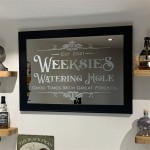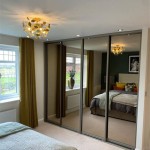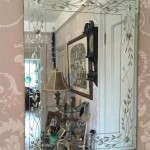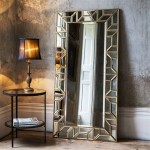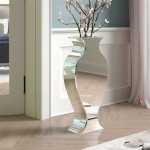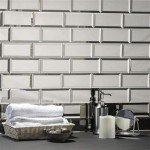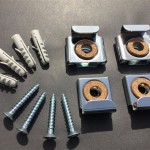Beveled Edge vs. Polished Mirror: A Comparative Analysis
Mirrors are ubiquitous elements in both residential and commercial spaces, serving both functional and decorative purposes. The edge finishing of a mirror significantly impacts its aesthetic appeal and overall design integration. Two common edge treatments are beveled edges and polished edges. This article explores the differences between these two finishes, outlining their characteristics, applications, and advantages.
A beveled edge is created by grinding and polishing the edges of a mirror at an angle, creating a sloping, faceted frame. This process reduces the thickness of the mirror at the periphery, resulting in a distinct visual separation between the mirrored surface and its surroundings. The angle of the bevel can vary depending on the desired effect, typically ranging from a subtle 1/8 inch to a more dramatic 1 inch or more. The bevel itself can be further polished to enhance its reflective qualities and add a touch of sophistication.
A polished edge, also known as a flat polish or seamed edge, involves smoothing and polishing the edges of the mirror without altering its thickness or creating a bevel. This results in a clean, continuous surface from the front to the back of the mirror. Polished edges offer a simpler, more minimalist aesthetic compared to beveled edges.
The choice between a beveled edge and a polished edge often depends on the desired aesthetic and the overall design context. Beveled edges introduce a sense of depth and dimension to the mirror, catching and refracting light to create a decorative frame. This effect can enhance the perceived value and elegance of a mirror, making it a suitable choice for traditional, ornate, or vintage-inspired interiors.
Polished edges, on the other hand, offer a sleek, contemporary look. Their simplicity complements modern, minimalist, and industrial design styles. The absence of a bevel allows the mirror to seamlessly blend with its surroundings, creating a clean, uninterrupted reflection.
Beyond aesthetics, the choice between a beveled edge and a polished edge also involves practical considerations. Beveled edges are generally more costly to produce due to the additional grinding and polishing steps required. This added complexity can also increase the lead time for production and installation.
Polished edges are typically less expensive and quicker to produce. Their simpler design also reduces the risk of chipping or damage during handling and installation. This makes polished edges a more practical and cost-effective option for large-scale projects or applications where durability is a primary concern.
Safety is another factor to consider. The sloping surface of a beveled edge can be less prone to chipping or cracking compared to the sharp 90-degree angle of a polished edge. However, both types of edges can be treated to enhance their durability and resistance to damage. Tempering, for example, can strengthen the glass and reduce the risk of shattering upon impact.
In terms of maintenance, both beveled and polished edges are relatively easy to clean. A soft cloth and a standard glass cleaner are generally sufficient to remove smudges and fingerprints. However, abrasive cleaners should be avoided as they can scratch the surface of the mirror, particularly the polished edge.
The size and shape of the mirror can also influence the choice of edge finish. Beveled edges are particularly effective on larger mirrors, where the play of light and reflection is more pronounced. On smaller mirrors, a bevel can appear disproportionately large and detract from the overall aesthetic. Polished edges, on the other hand, are suitable for mirrors of all sizes and shapes, offering a versatile and adaptable solution.
The frame of the mirror, if present, can also impact the choice of edge finish. A heavily ornamented frame might compete with a beveled edge, while a simple or minimalist frame might benefit from the added detail. A polished edge is often preferred for frameless mirrors, allowing the reflective surface to take center stage.
Finally, the intended application of the mirror should be considered. For example, a beveled edge might be more appropriate for a decorative wall mirror in a living room or dining room, while a polished edge might be more suitable for a bathroom mirror or a full-length mirror in a bedroom.
Ultimately, the choice between a beveled edge and a polished edge is a matter of personal preference and design sensibilities. By understanding the characteristics and advantages of each finish, one can make an informed decision that complements the overall aesthetic and functional requirements of the space.

Glass Information

Glass Edging And Beveling Pars

Bevel Jpg

Beveled Edged Glass And Mirror Fabricators Inc

Beveled Edged Glass And Mirror Fabricators Inc

How To Choose An Edge Finish For Your Glass

Polished Edge Mirror Frameless Mirrors Cabinets

Beveled Edged Glass And Mirror Fabricators Inc

Beveled Edged Glass And Mirror Fabricators Inc

Differences Between Seamed And Polished Glass Edges Pioneer


